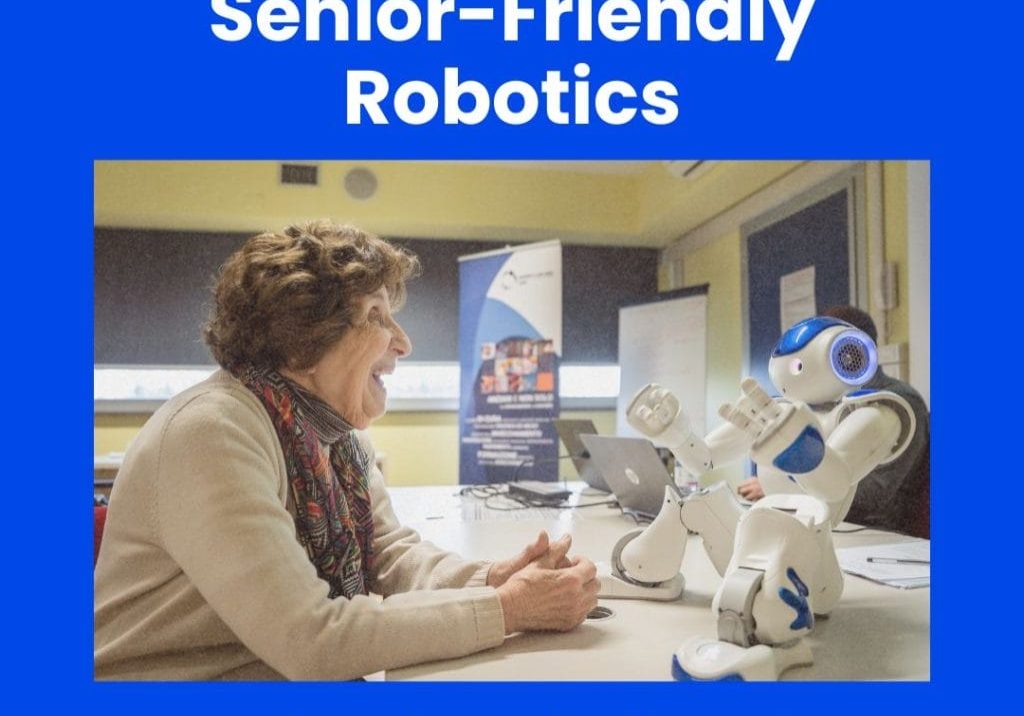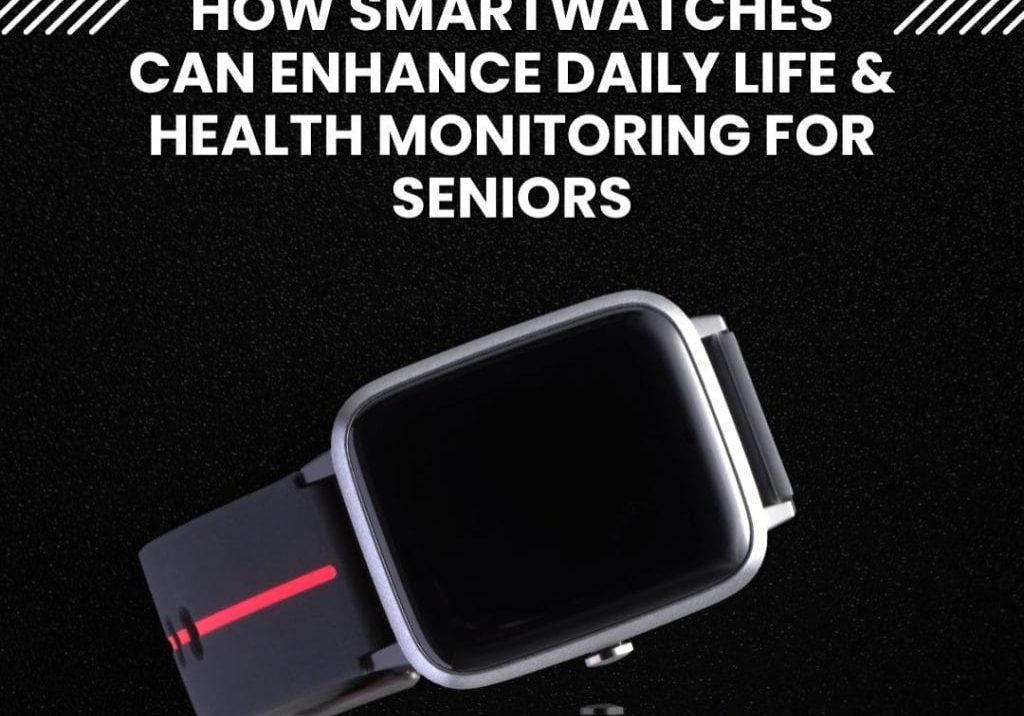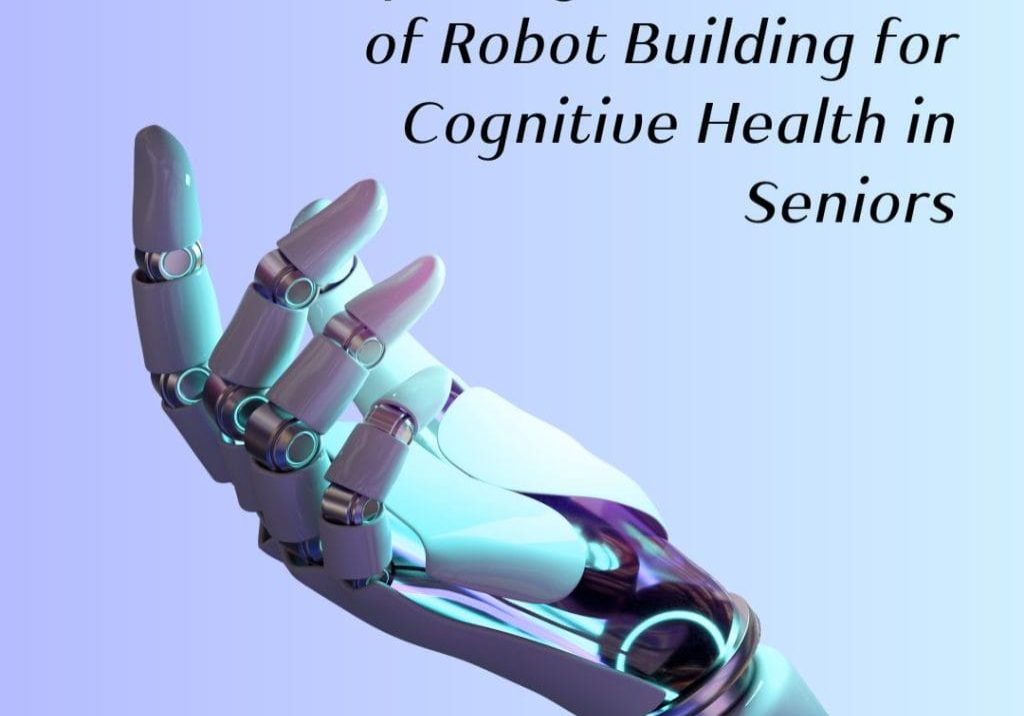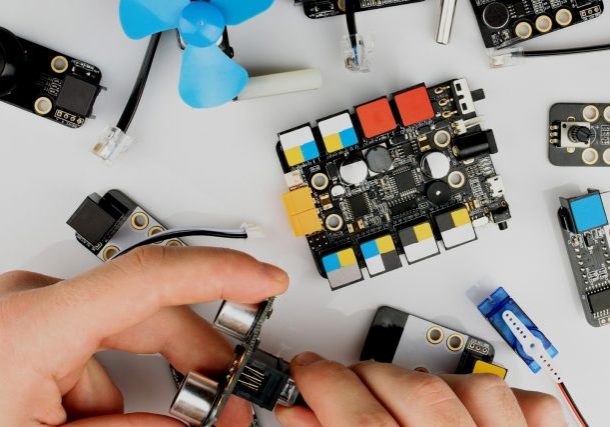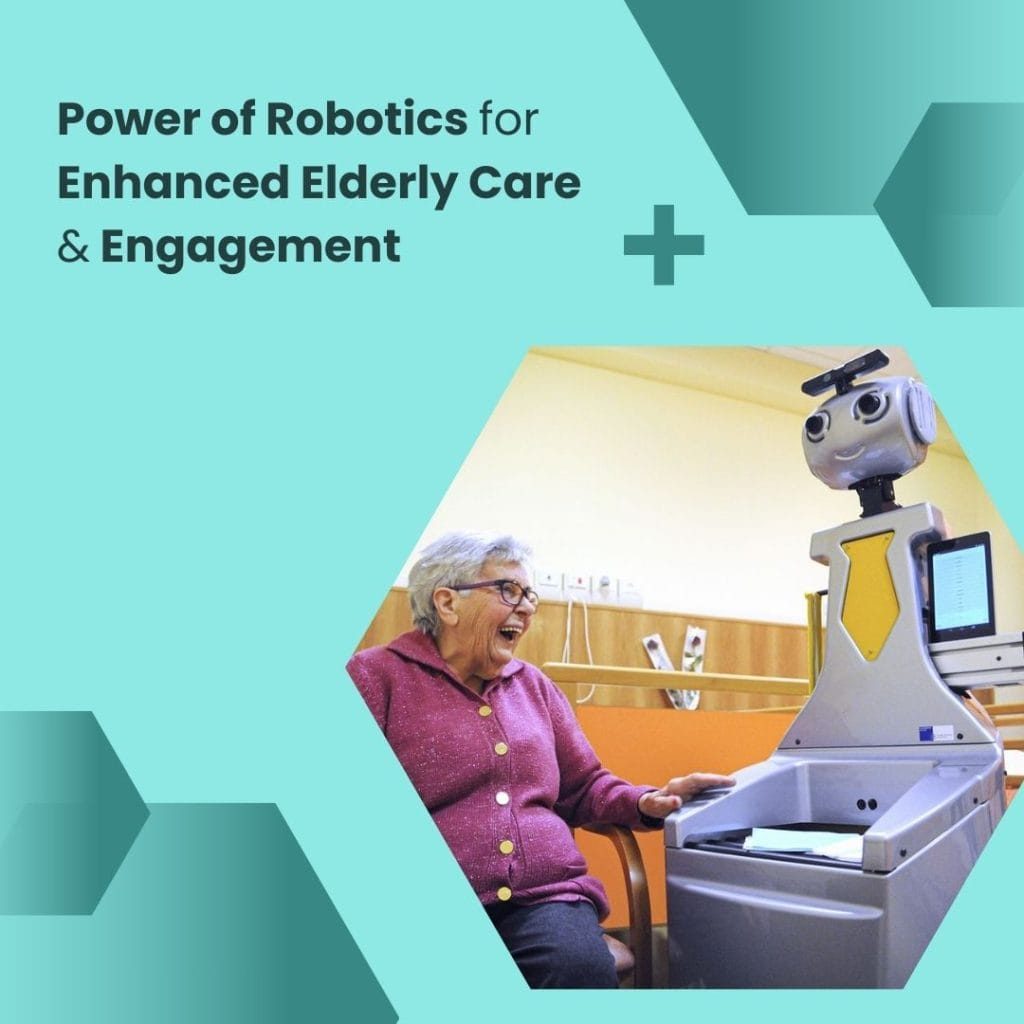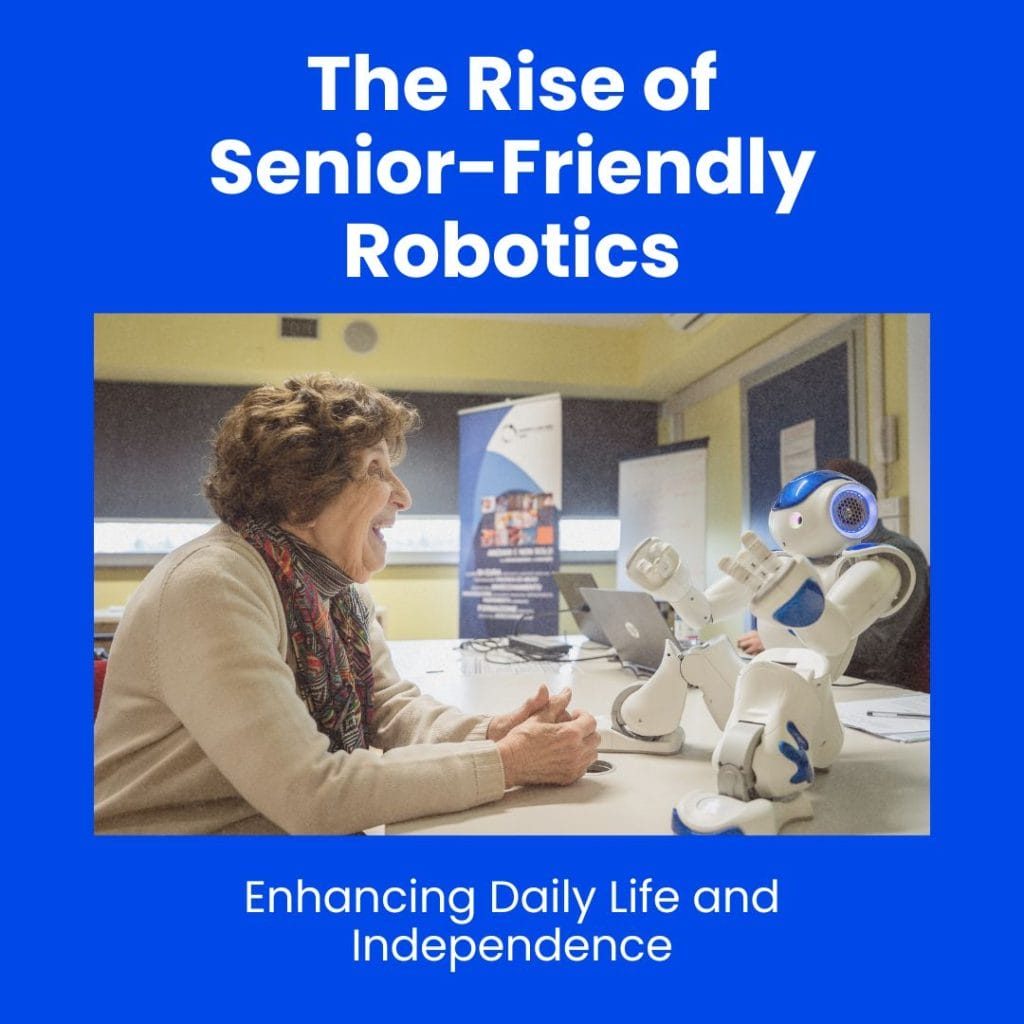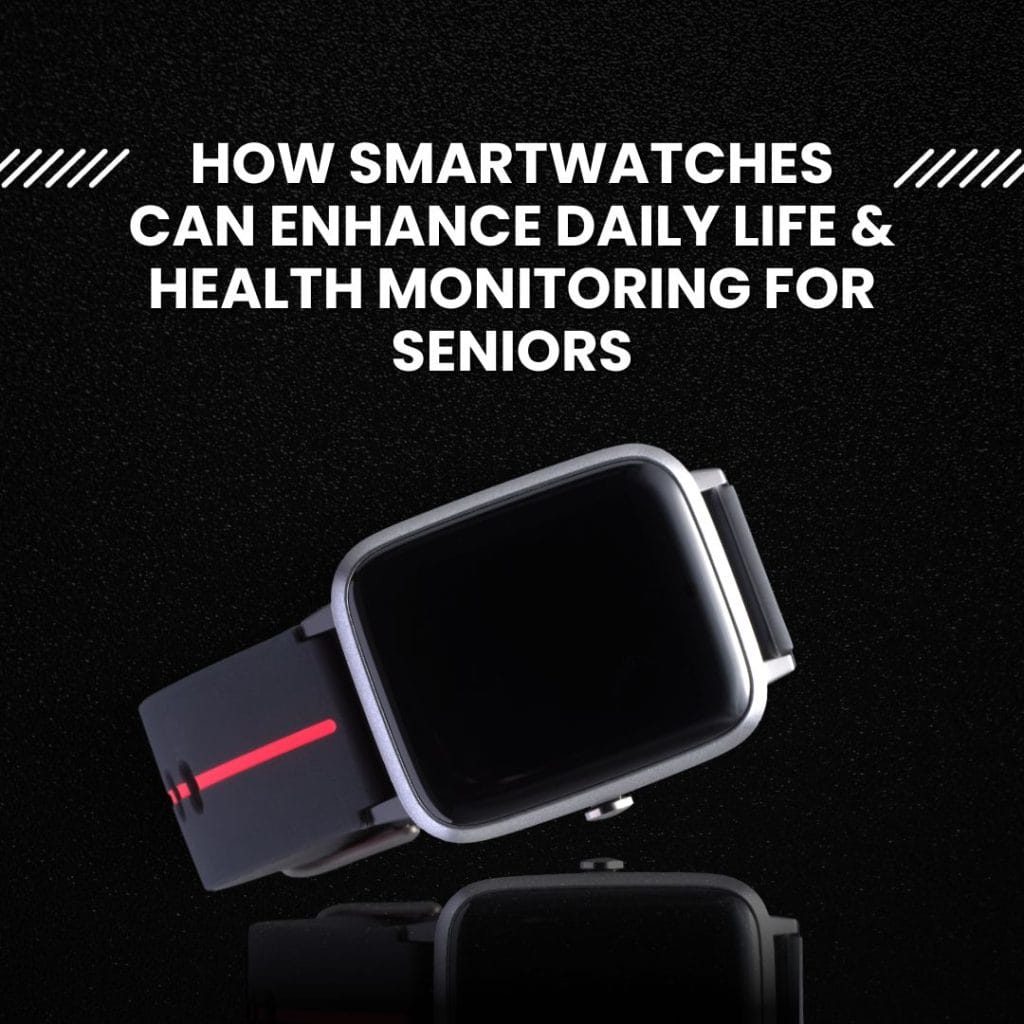In an age where technology and health intersect more than ever, the advent of robotics stands out as a beacon of innovation, especially in the realm of senior care. As we delve into the era of digital transformation, the potential of robotics to enhance the health, well-being, and independence of seniors is not just a possibility – it’s a burgeoning reality. “Enhancing Senior Health with Robotics: Kits, Cognitive Benefits, and Everyday Applications” explores this exciting frontier, unfolding the myriad ways in which robotics is revolutionizing the lives of our elderly population.
From the corridors of advanced research facilities to the comfort of home living rooms, robotics is redefining the landscape of senior care. Whether it’s through the physical assistance provided by robot aids, the cognitive stimulation offered by robot-building kits, or the health monitoring capabilities of smart wearables, these technological marvels are becoming indispensable in addressing the unique needs of the aging demographic. In this comprehensive exploration, we will journey through various facets of robotics in senior health – examining not only the practical applications but also the profound impact these innovations have on enhancing quality of life.
As we embark on this exploration, we invite you to join us in discovering how robotics is not just a tool of the future but a present-day ally in enhancing the health and independence of our senior community. Embrace the journey through this innovative landscape, where technology meets compassion, and discover how the integration of robotics into senior care is reshaping the way we think about aging and health.
The Rise of Senior-Friendly Robotics
In recent years, the field of robotics has made significant strides, particularly in developing technologies tailored to assist the elderly. This surge in senior-friendly robotics is revolutionizing how we approach aging, offering promising solutions to enhance the quality of life and independence for seniors.
Advancements in Senior-Friendly Robotics
The current landscape of senior-friendly robotics is characterized by a variety of innovative solutions. These range from simple robotic aids designed for everyday tasks to more complex systems equipped with artificial intelligence (AI) and machine learning capabilities. Examples include robotic mobility aids, automated medication dispensers, and interactive companions that can engage in conversation and monitor health indicators.
1. Integration with Smart Home Technology
Another key aspect is the integration of these robots with smart home technology. This allows for seamless control and monitoring, enabling seniors to manage their environment effortlessly. Smart sensors, voice-activated controls, and remote monitoring systems are just a few examples of how robotics are being integrated into the homes of seniors to provide a safer and more comfortable living environment.
2. Enhancing Safety and Mobility
One of the primary benefits of senior-friendly robotics is the enhancement of safety and mobility. Robots equipped with fall detection and emergency alert systems can provide a vital safety net for seniors living alone. Mobility-assistive robots help seniors move around their homes and communities more easily, fostering independence and reducing the risk of falls and injuries.
3. Promoting Social Interaction and Mental Well-being
Robotic companions are increasingly used to promote social interaction and mental well-being among the elderly. These robots can engage in basic conversations, play games, and even connect seniors with their family and friends through video calls. This interaction is crucial in combating loneliness and isolation, common challenges faced by the elderly population.
4. Assisting with Daily Tasks and Healthcare
Robots designed to assist with daily tasks such as cleaning, cooking, and medication management significantly reduce the burden on seniors, allowing them to maintain a higher level of independence. Additionally, health-monitoring robots can track vital signs and remind seniors to take their medications, playing a critical role in managing chronic conditions and ensuring timely medical interventions.
The Role of Robotics in Senior Fitness
1. Enhancing Exercise Safety
One of the primary roles of robotics in senior fitness is enhancing the safety of exercise routines. Robotic equipment is designed to reduce the risk of injuries, with features like automated adjustments for resistance and posture correction. This ensures that seniors can exercise without the fear of strain or overexertion.
2. Personalized Exercise Regimens
Robotics technology enables the creation of personalized exercise regimens for seniors. Through AI and machine learning, robotic fitness equipment can adapt to the individual’s fitness level, health conditions, and goals. This personalization is crucial in providing effective and safe workout routines for seniors with varying abilities and health statuses.
Innovative Solutions in Robotic Senior Fitness
1. Stationary Bikes for Seniors
One of the standout innovations in this field is the development of robotic stationary bikes designed specifically for seniors. These bikes often feature:
- Ergonomic Design: To ensure comfort and reduce strain on joints and muscles.
- Automated Adjustments: Adjusting resistance and seat height automatically to suit the user’s needs.
- Virtual Reality Integration: Offering immersive experiences that make exercise more enjoyable and engaging.
2. Robotic Walking Aids
Robotic walking aids are another innovative solution, providing support and stability for seniors during exercise. These aids can adapt to different terrains and assist in balance, making walking a safer and more accessible form of exercise for the elderly.
3. Exercise Robots
Exercise robots are emerging as personal trainers for seniors. These robots can demonstrate exercises, provide feedback on form, and even offer encouragement. This personalized interaction makes exercising more engaging and effective for seniors.
The Impact of Robotic Exercise Equipment
1. Improved Physical Health
Robotic exercise equipment like stationary bikes helps improve cardiovascular health, muscle strength, and flexibility in seniors. This improvement in physical health is crucial in reducing the risk of chronic diseases and enhancing overall well-being.
2. Mental Health Benefits
Exercise has a positive impact on mental health, and robotic solutions make it more accessible for seniors. The engagement and interactivity provided by these solutions can alleviate feelings of isolation and depression, common in older adults.
3. Increased Motivation and Engagement
The innovative features of robotic exercise equipment can increase motivation and engagement in seniors. The use of technology, combined with the safety and personalization offered, makes exercising a more appealing and rewarding experience.
Cognitive Health Benefits of Robotics
The intersection of robotics and healthcare is yielding groundbreaking results, particularly in enhancing cognitive health among seniors. Robotics, and specifically the process of robot building, offers a unique combination of mental stimulation, skill development, and social engagement, all of which are key factors in maintaining and improving cognitive health in older adults.
Understanding Cognitive Health in Seniors
Cognitive health refers to the ability to think, learn, and remember. It is a crucial aspect of overall well-being, especially for seniors. As people age, maintaining cognitive health becomes a priority, with the goal of preserving memory, problem-solving skills, and emotional functions.
The Role of Robotics in Enhancing Cognitive Health
1. Stimulating Mental Activity
Robotics, particularly the aspect of building and programming robots, provides a highly stimulating mental activity. It engages various cognitive domains such as problem-solving, critical thinking, and creativity. This kind of intellectual engagement is essential for keeping the brain active and healthy.
2. Learning New Skills
The process of learning how to build and program robots is a potent cognitive exercise. It requires the acquisition of new skills, understanding complex concepts, and applying them practically. This continuous learning process helps in keeping the brain engaged and agile, which is vital for cognitive health.
3. Memory Enhancement
Robot building involves remembering instructions, sequences, and techniques, which is a beneficial exercise for memory retention. Regular engagement in such activities can help in strengthening memory, a crucial aspect of cognitive health that tends to decline with age.
Real-World Applications
1. Robotics Workshops for Seniors
Organized robotics workshops for seniors are becoming more popular. These workshops offer guided sessions on building and programming robots, tailored to suit the learning pace and interests of older adults. They provide a supportive environment where seniors can learn and engage with technology meaningfully.
2. Therapeutic Robotics Programs
Some therapeutic programs now incorporate robotics as a tool for cognitive rehabilitation. These programs use robot building and interaction as a means to improve cognitive functions in seniors, especially those with mild cognitive impairments or early stages of dementia.
3. Social Interaction Through Robotics Clubs
Robotics clubs or groups offer a social platform for seniors to interact, collaborate, and share knowledge. This social interaction is not only emotionally fulfilling but also stimulates cognitive functions through discussions, teamwork, and shared problem-solving.
Benefits Beyond Cognitive Health
1. Promoting a Sense of Accomplishment
Completing a robotics project gives a sense of accomplishment and boosts self-esteem. This emotional upliftment is beneficial for overall mental health.
2. Technological Empowerment
Engaging with robotics empowers seniors to be more comfortable with technology, making them more independent and confident in navigating the modern world.
3. Physical Health Benefits
Robot building often involves manual skills, which can help in maintaining fine motor skills and dexterity.
Robotics for Enhanced Elderly Care and Engagement
In the rapidly advancing field of technology, robotics is playing a transformative role in enhancing elderly care and engagement. As the global population ages, the need for efficient and compassionate care solutions becomes increasingly critical. Robotics in elderly care is not just about providing physical assistance; it’s also about fostering social engagement and emotional support.
The Evolving Role of Robotics in Elderly Care
1. Providing Daily Assistance
Robotic technologies are revolutionizing the way daily care is provided to seniors. From automated medication dispensers to robotic mobility aids, these innovations are enabling the elderly to maintain their independence while ensuring their safety and well-being. These robots can perform tasks like reminding seniors to take their medication, assisting with mobility, or helping with household chores.
2. Enhancing Safety and Monitoring
Safety is a paramount concern in elderly care, and robotics is significantly contributing to this aspect. Robots equipped with sensors can monitor the health and activity levels of seniors, detect falls, and alert caregivers in case of emergencies. This constant monitoring ensures timely intervention and provides peace of mind for both seniors and their families.
Robotics in Social Engagement and Emotional Support
1. Companion Robots
Companion robots are a remarkable innovation in providing emotional support and social engagement for the elderly. These robots can interact with seniors through conversation, music, and simple games. They are designed to provide companionship, reduce feelings of loneliness, and even assist in therapy for those with cognitive impairments.
2. Virtual Reality and Interactive Platforms
Some robotic systems integrate virtual reality (VR) to provide interactive experiences that can engage seniors in a variety of activities. These VR experiences can include virtual travel, memory games, or exercise routines, all tailored to stimulate the minds and bodies of the elderly.
3. Telepresence Robots
Telepresence robots allow seniors to connect with their loved ones remotely. These robots can navigate around the home, enabling face-to-face interaction through a screen, even if family members are miles away. This technology helps in maintaining strong family connections and reduces the sense of isolation often experienced by the elderly.
The Benefits of Robotics in Elderly Care
1. Improved Quality of Life
By providing assistance with daily tasks and enhancing safety, robotics improves the overall quality of life for seniors. This technology enables them to live more independently and with dignity.
2. Cognitive and Emotional Well-being
Engaging with robotic technologies can offer cognitive stimulation, helping to keep the minds of seniors active and engaged. Emotional well-being is also enhanced through companionship and social interaction provided by these robots.
3. Reduced Caregiver Burden
Robotics also plays a crucial role in reducing the physical and emotional burden on caregivers. By handling routine tasks and monitoring, robots allow caregivers to focus more on personal interaction and quality care.
Wearable Robotics for Seniors: Revolutionizing Elderly Care and Wellness
In an age where technology seamlessly blends with daily life, wearable robotics for seniors are emerging as a game-changer in elderly care. From smartwatches to advanced wearable tech, these devices are significantly impacting health monitoring and enhancing the daily lives of seniors. This article delves into the current state and future potential of wearable robotics in senior care.
Current Impact of Wearable Robotics on Senior Care
1. Health Monitoring Through Smartwatches
Smartwatches have become invaluable in the realm of senior health care. Equipped with sensors to monitor heart rate, blood pressure, and even blood oxygen levels, these devices offer real-time health data. This constant monitoring can alert seniors and caregivers to potential health issues before they become critical, ensuring timely medical intervention.
2. Enhancing Daily Life
Beyond health monitoring, wearable tech plays a crucial role in enhancing the daily lives of seniors. GPS tracking in these devices helps in locating seniors, especially those with conditions like dementia who may wander. Additionally, fall detection technology can automatically alert emergency services and caregivers in case of a fall, a common and serious concern for the elderly.
3. Medication Reminders
Many wearable devices are programmed to remind seniors to take their medications on time. This feature is particularly beneficial for those with complex medication schedules, helping them adhere to their treatment plans and maintain their health.
Future of Wearable Robotics in Senior Care
1. Advanced Mobility Assistance
The future of wearable robotics holds immense promise in providing advanced mobility assistance. Exoskeletons, for example, are being developed to assist seniors with limited mobility. These wearable robotic suits can help in supporting body weight, enhancing strength, and improving balance, thereby enabling seniors to move more freely and safely.
2. Emotional and Cognitive Support
Future wearable tech is expected to offer emotional and cognitive support. Innovations in this area might include devices that detect mood changes and cognitive decline, offering therapeutic suggestions or alerting caregivers. This technology could be pivotal in managing conditions like depression and early dementia.
3. Integration with Telehealth Services
Wearable robotics are likely to be more integrated with telehealth services. This integration will enable doctors to remotely monitor patients’ vital signs and receive alerts in case of abnormalities, allowing for prompt and efficient medical care.
4. Personalized Health Insights
With advancements in AI and machine learning, wearable devices will provide more personalized health insights. They will be able to analyze long-term data trends to offer tailored health advice, predict potential health issues, and customize exercise and nutrition plans.
5. Social Connectivity
Incorporating social connectivity features into wearable robotics is another anticipated development. These features will allow seniors to easily stay in touch with family, friends, and social circles, combating isolation and promoting mental well-being.
How Robotics Are Becoming a Part of the Daily Routine for Seniors
The integration of advanced robotics into the daily lives of seniors marks a significant leap forward in elder care technology. As the world’s elderly population grows, the demand for innovative solutions to assist them in their daily routines and enhance their quality of life has never been greater. Robotics, once a concept of science fiction, is now becoming a tangible and beneficial part of seniors’ everyday lives.
1. Assistance with Daily Tasks
Robotic technology in the form of automated home systems and personal assistant robots is increasingly aiding seniors with daily tasks. These robots can perform functions ranging from vacuuming to preparing meals, significantly reducing the physical strain of household chores.
2. Health Monitoring and Medication Management
Advanced robots equipped with health monitoring capabilities are playing a crucial role in managing the well-being of seniors. These robots can track vital signs, remind seniors to take their medications on time, and alert caregivers or medical professionals in case of health concerns.
3. Mobility and Transportation Assistance
Robotic mobility aids are transforming how seniors move around their homes and communities. Smart wheelchairs and walking aids equipped with sensors and AI can navigate through spaces, avoiding obstacles, and ensuring safe transportation.
4. Social Interaction and Companionship
Robotic companions are designed to provide social interaction, reducing feelings of loneliness and isolation among seniors. These robots can engage in basic conversations, play games, and even connect seniors with their families through digital interfaces.
Future Perspectives and Potential Developments
1. Enhanced Personalization
Future advancements in robotics are expected to focus on enhanced personalization. Robots will be able to learn and adapt to individual preferences and needs, offering more tailored assistance and interaction.
2. Integration with Smart Home Technology
The integration of robotics with smart home technology will create more cohesive and efficient living environments for seniors. This integration will allow for centralized control and monitoring of various aspects of home life, from security to energy management.
3. Advanced Health Care Features
Future robots will likely incorporate more advanced healthcare features, such as conducting basic medical examinations and providing physical therapy assistance. These advancements could revolutionize at-home healthcare for seniors.
4. Emotional and Cognitive Support
Emerging technologies are exploring the potential of robots in providing emotional and cognitive support. This includes the development of robots that can detect emotional states and cognitive decline, offering appropriate activities and alerts to caregivers.
5. Ethical and Privacy Considerations
As robotics becomes more integrated into the lives of seniors, ethical and privacy considerations will be paramount. Future developments will need to address these concerns, ensuring that the use of robotics respects the dignity and privacy of the elderly.
DIY Robotics and Senior Engagement: Exploring Top Robot Kits of 2024
The world of Do-It-Yourself (DIY) robotics has opened up a new avenue for senior engagement, blending technology with creativity and learning. As we venture into 2024, the market is teeming with innovative robot kits designed specifically for seniors. These kits not only offer a fun and educational pastime but also provide numerous cognitive and emotional benefits. In this article, we explore the top robot kits available for seniors in 2024 and delve into the advantages of engaging with DIY robotics.
Top Robot Kits for Seniors in 2024
1. The SeniorBot Deluxe Kit
The SeniorBot Deluxe is a user-friendly kit tailored for seniors. It features large, easy-to-handle components and clear, step-by-step instructions. This kit focuses on building basic robots, making it perfect for beginners.
2. MindCrafters Robotics Kit
MindCrafters kit is designed for those interested in slightly more challenging projects. It includes sensors and programmable elements, allowing seniors to create robots that can perform simple tasks and respond to their environment.
3. TechEase Companion Robot Kit
The TechEase Companion Robot Kit is unique as it focuses on creating robotic companions. These robots can engage in basic conversations and are equipped with features like medication reminders, making them practical for daily life.
4. CreativeHands SmartBot Kit
For those who love creativity, the CreativeHands SmartBot Kit is ideal. It comes with a variety of components that allow for the creation of customized robots. This kit encourages artistic expression alongside technical skills.
5. RoboHealth Advanced Kit
The RoboHealth Advanced Kit is designed for seniors interested in health-monitoring robots. It includes sensors to track vitals and the ability to sync with smartphones or tablets for health data management.
Benefits of Engaging with DIY Robotics
1. Cognitive Stimulation
Building and programming robots requires problem-solving, critical thinking, and continuous learning. These activities provide excellent cognitive stimulation, which is essential for maintaining mental agility in seniors.
2. Enhancing Fine Motor Skills
The hands-on nature of assembling robot kits can help improve fine motor skills. Manipulating small parts and tools aids in maintaining dexterity and hand-eye coordination.
3. Emotional Well-being
Engaging in a fulfilling hobby like DIY robotics can significantly boost emotional well-being. The sense of accomplishment from building a robot from scratch can enhance self-esteem and provide a sense of purpose.
4. Social Engagement
Robotics can also be a social activity. Many seniors join clubs or online communities where they share ideas, solve problems together, and showcase their creations, fostering a sense of community and belonging.
Keeping Up with Technological Advances
Engaging with DIY robotics helps seniors keep up with technological advancements, making them more tech-savvy and less intimidated by new technologies in their daily lives.
Challenges and Considerations in Adopting Robotics for Senior Health
The adoption of robotics in senior health care is a growing trend, offering innovative solutions for improving the quality of life of the elderly. However, this integration is not without its challenges. Understanding and addressing these challenges, including ethical considerations and privacy concerns, is crucial for the successful implementation of robotics in elderly care.
Challenges in Adopting Robotics for Senior Health
1. Technological Adaptation
One of the primary challenges is the adaptation of technology by seniors. Many elderly individuals may not be familiar with or are hesitant to use advanced technology. Ensuring that robotic devices are user-friendly and providing adequate training and support is essential for successful adoption.
2. Cost and Accessibility
The high cost of advanced robotic systems can be a significant barrier. Making these technologies affordable and accessible to a broader range of seniors, including those with limited financial resources, is a crucial challenge that needs to be addressed.
3. Reliability and Maintenance
The reliability of robotic devices is another concern. Ensuring that these machines function correctly and consistently without frequent breakdowns is essential. Additionally, the need for regular maintenance and technical support can pose a challenge, especially in remote or under-resourced areas.
4. Physical and Psychological Impact
Understanding the physical and psychological impact of robotics on seniors is vital. It’s important to ensure that the use of robotics does not lead to reduced physical activity or increased feelings of loneliness or dependency.
Ethical Considerations and Privacy Concerns
1. Ethical Implications
The integration of robotics in senior care raises several ethical questions. It’s essential to consider the dignity and autonomy of the elderly. There is a fine line between providing assistance and undermining the independence of seniors, and it’s crucial to navigate this carefully.
2. Privacy and Data Security
Robots in healthcare often collect and store sensitive personal and health data. Ensuring the privacy and security of this data is paramount. There must be robust measures to protect against unauthorized access and data breaches.
3. Dependency and Dehumanization
There’s a risk of seniors becoming overly dependent on robotic assistance, which can lead to a loss of skills and independence. Additionally, over-reliance on machines for companionship or care could lead to dehumanization of care and decreased human interaction.
4. Informed Consent
Ensuring informed consent is critical, especially when dealing with seniors who may have cognitive impairments. Seniors must fully understand what data is being collected, how it will be used, and the potential risks and benefits of using robotic devices.
Conclusion
The rise of senior-friendly robotics marks a pivotal shift in how we approach aging and eldercare. By integrating advanced technology into the daily lives of seniors, we are not just enhancing their safety and independence but also enriching their social and emotional well-being. The advancements in robotics, from automated home systems to interactive companions, promise a future where the elderly can enjoy a higher quality of life with dignity and autonomy. As we continue to innovate and refine these technologies, it is crucial to address the challenges and ethical considerations involved, ensuring that the benefits of robotics are accessible and beneficial to all seniors. The journey towards a more technologically integrated future in senior care is both exciting and necessary, paving the way for a more compassionate, efficient, and supportive approach to aging.


